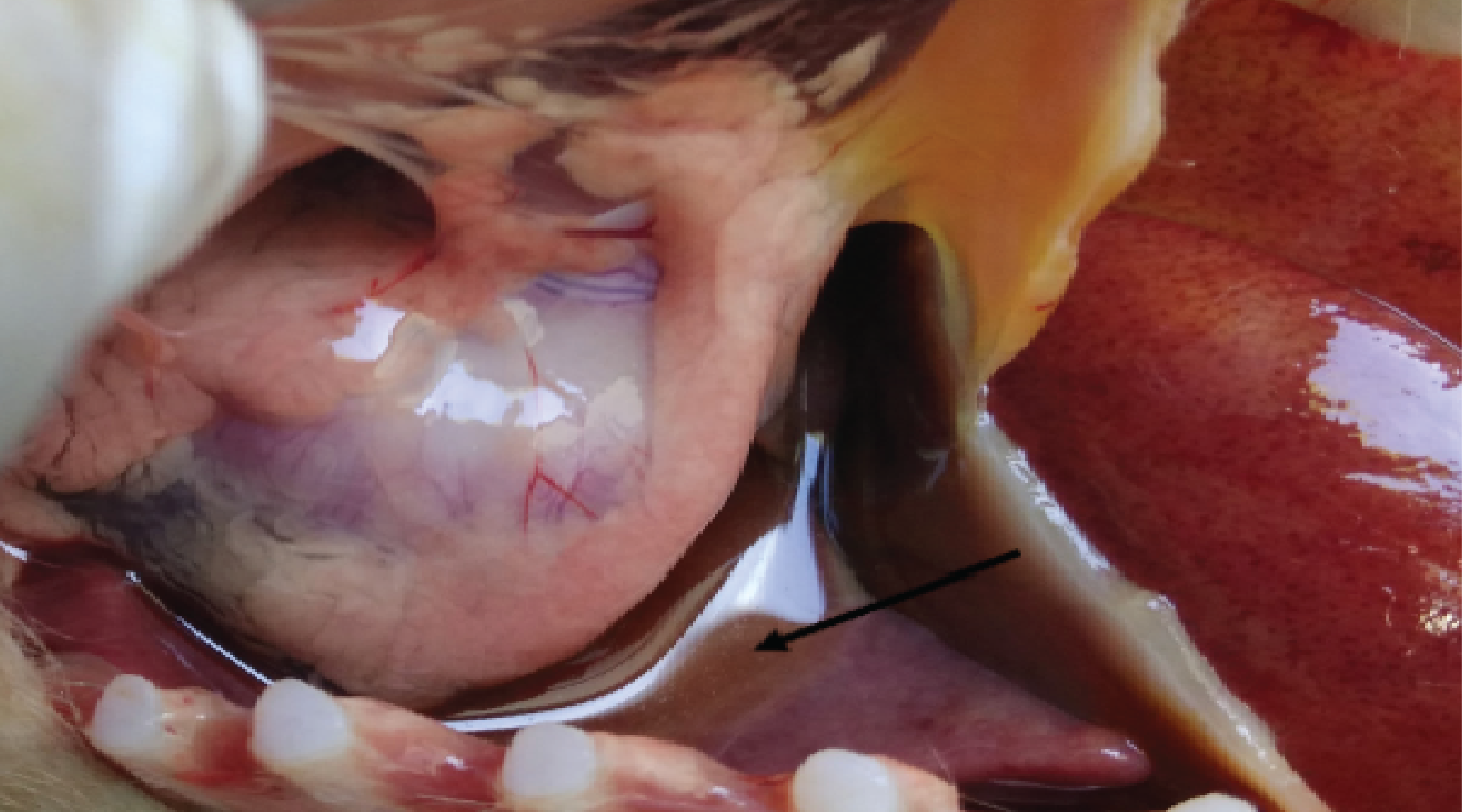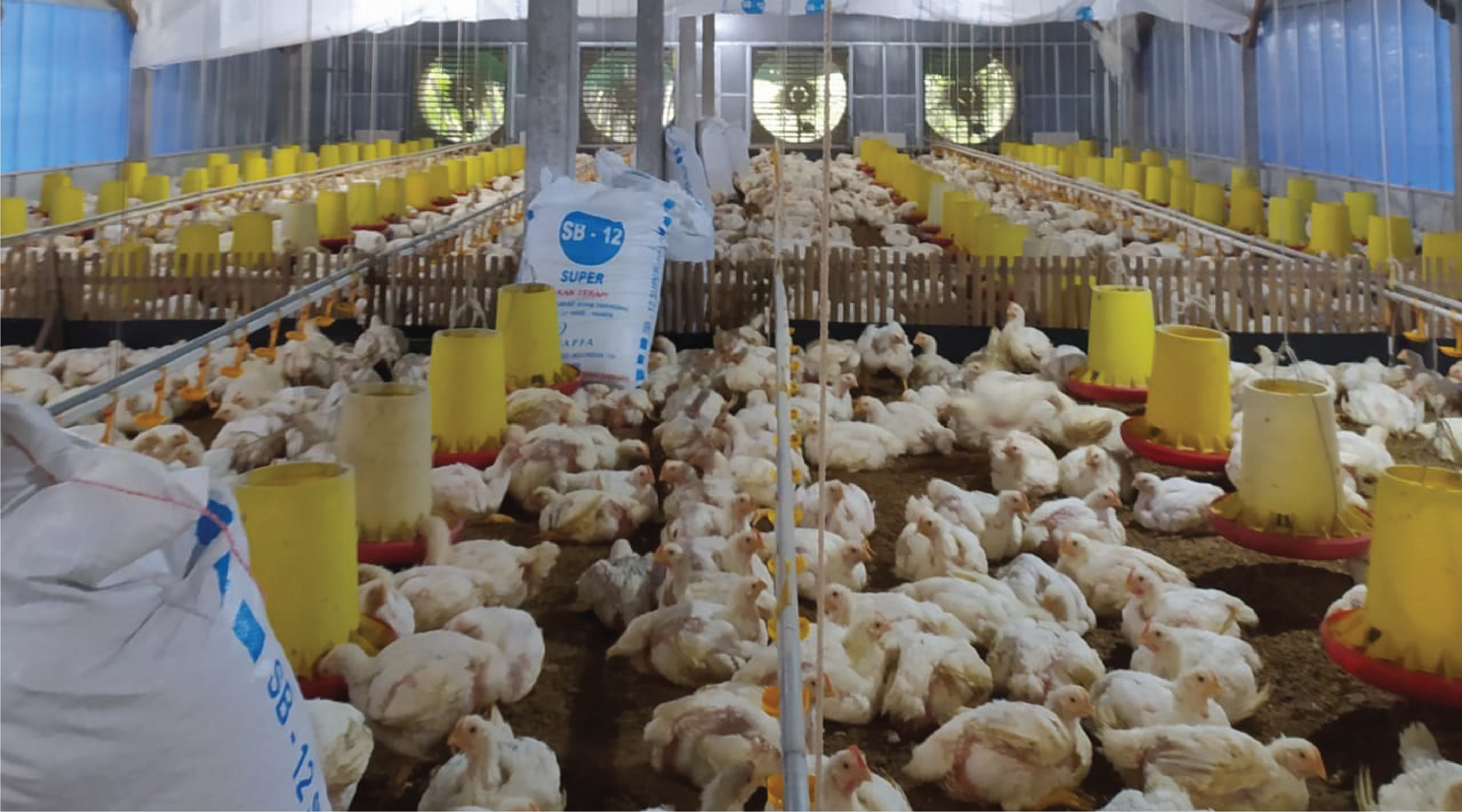The Incidence of Gastrointestinal Helminthiasis in Etawa Crossbred Goat in Etawa Farm Jombang
Downloads
Background: Goat is one type of small ruminant that has a contribution to supporting the development of livestock and is an alternative to meet the needs of animal protein in Indonesian society. The current goat raising system is still carried out by being caged or semi-grazed. In this maintenance system, goats are very susceptible to parasitic diseases, especially those caused by the digestive tract worms. Gastrointestinal worms are a significant problem in livestock, especially small ruminants that cause health problems, such as diarrhea, weight loss, and decreased appetite. Purpose: To determine the percentage and types of digestive tract helminths in Etawa crossbred goats by age. Method: 30 feces samples from Etawa crossbred goats were collected for laboratory examination using native, sedimentation, and flotation methods. Result: From the microscopic examination, it was found that the prevalence of gastrointestinal helminthiasis was 56.6%. Also, the type of worm eggs found in the feces samples from Etawa crossbred goats were Cotylophoron cotylophorum, Moniezia benedeni, Oesophagostomum columbianum, Strongyloides papillosus, Haemonchus contortus, Trichostrongylus sp.,and Trichuris globulosa.
Animut, G., Goetsch, A.I., Aiken, G.E., Puchala, R., Detweiler, G., Krehbiel, C.R., Merkel, R.C., Sahlu, T., Dawsin. L.J. 2005. Grazing behavior and energy expenditure by sheep and goats cograzing grass forb pastures at three stocking rates. Small Ruminant Research Vol. 59 (2-3). Pp: 191-201
Bowman, D. D., Georgi, J. R.. 2009. Georgi's Parasitology for Veterinarians. Elsevier Health Sciences. United Kingdom.
Direktoral Jendral Bina Produksi Peternakan. 2016. Statistik Peternakan tahun 2016. Departemen Pertanian, Jakarta.
Dhewiyanti, V., Setyawati, T. R., Ari, H.Y. 2015. Prevalensi dan Intesitas Larva infektif Nematoda Gastrointestinal Strongylida dan Rhabditida pada Kultur Feses Kambing (Capra sp.) di Tempat Pemotongan Hewan Kambing Pontianak. Protobiont Vol.4(1). Pp: 178-183
Koesdarto, S., Subekti, S., Mumpuni, S., Puspitawati, H., Kusnoto. 2007. Buku Ajar Ilmu Penyakit Nematoda Veteriner. Fakultas Kedokteran Hewan. Universitas Airlangga. Surabaya.
Levine, N. D. 1994. Parasitologi Veteriner. Diterjemahkan oleh Ashadi G. Dari Textbook of Veterinary Parasitology. Yogyakarta: Gadjah Mada University Press.
Mubarok, S., Suratma, N.A., Dwinata, I.M. 2015. Prevalensi Trematoda di Sentra Pembimbitan Sapi Bali Desa Sobangan, Kecamatan Mengwi, Kabupaten Bandung. Indonesia Medicus Veterinus Vol.4(1). Pp:48-53
Mulyadi, T., Siswanto, Hartono, M. 2017. Cacing Saluran Pencernaan Pada Kambing Peranakan Etawa (PE) di Kelompok Tani Kecamatan Gedog Tataan Kabupaten Pesawaran Lampung. Jurnal Riset dan Inovasi Peternakan Vol.2(2). Pp: 21-26
Rumiyani, T., Hamdani, M.D.I. 2017. Status Sosial Ekonomi Peternakan Kambing Peranakan Etawa (PE) di Desa Sungai Langka, Kecamatan Gedong Tataan, Kabupaten Pesawaran Provinsi Lampung. Jurnal Ilmiah Peternakan Terpadu Vol.5(2). Pp:44-48
Schoenian, S. 2003. Integrated Parasite Management (IPM) in Small Ruminants. Available at http://www. Sheep and goat. com/articles/IPM.html. Diakses pada: 20 Maret 2019.
Southwell, J., Fisk, C., Sallur. N. 2008. Internal Parasite Control in Sheep Reference Manual. Australia: Sheep CRC.
Subekti, S., Mumpuni, S., Kusnoto. 2007. Ilmu Penyakit Nematoda Veteriner. Departemen Pendidikan dan Kebudayaan. Fakultas Kedokteran Hewan Universitas Airlangga. Surabaya.
Wakelin, D. 1984. Immunity to Parasites. How Animals Control Parasite Infections. Hodder Arnold Ltd.
Winarso, A. 2018. Infeksi Parasit Gastroinal pada Kambing di Kupang. Veterinary Letters Vol. 2(2). Pp. 25-26
Wiryosuhanto, S. D., Jacoeb, T.N. 1994. Prospek Budidaya Ternak Sapi. Yogyakarta (ID): Kanisius.
Zeryehun, T. 2012. Helminthosis of Sheep and Goats in and Around Haramaya, Southeastern Ethiopia. Journal of Veterinary Medicine and Animal Health Vol. 4(3). Pp:48-55
Zulfikar, Hambal, Razali. 2012. Derajat Infestasi Parasit Nematoda Gastrointestinal pada Sapi di Aceh Bagian Tengah. Lentera: Jurnal Ilmiah Sains dan Teknologi Vol.12(3). Pp: 1-7
Copyright (c) 2020 Dwi Novita Sari, Tri Wahyu Suprayogi, Djoko Legowo, Siti Eliana Rochmi

This work is licensed under a Creative Commons Attribution-ShareAlike 4.0 International License.
- The journal allows the author to hold the copyright of the article without restrictions.
- The journal allows the author(s) to retain publishing rights without restrictions.
- The legal formal aspect of journal publication accessibility refers to Creative Commons Attribution Share-Alike (CC BY-SA).

Journal of Applied Veterinary Science and Technology is licensed under a Creative Commons Attribution-ShareAlike 4.0 International License





























